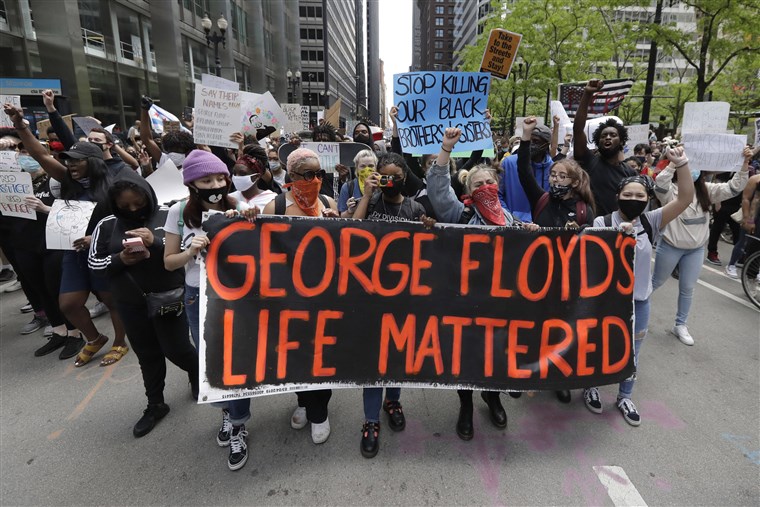When Officer Chauvin told George Floyd “if you can talk, you can breathe,” the Minneapolis Police Department officer ignored fundamental scientific principles. Until recently, some policies of that department disregarded science as well, categorizing neck restraint maneuvers as a “non-deadly force option.” President Obama called on the police and the public to create a “new normal.” As part of the new normal, law enforcement agencies should embrace the use of scientific evidence in policy-making.
When George Floyd said, “I’m about to die,” he knew his life was ending. He died lying face down on the ground while handcuffed. Medics documented “working on an unresponsive, pulseless male” at the scene and he never regained his pulse on the way to the hospital. Sweeping reform must ensure no one dies like George Floyd did, ever again.
But first, the public should understand what most likely killed George Floyd after his 114 breathless words.
The Minneapolis medical examiner and the physicians who performed an independent autopsy commissioned by the Floyd family disagree about the cause of Floyd’s death. The medical examiner determined the cause of death as “cardiopulmonary arrest complicating law enforcement subdual, restraint, and neck compression,” making no mention of asphyxiation. The independent autopsy report reported that “asphyxiation from sustained pressure” on his neck and back by law enforcement officers, which cut off blood flow to his brain, is what killed him.
Who is right?
George Floyd’s death appears to be a result of two mechanisms.
Asphyxia is essentially death by suffocation. The heavy pressure on Floyd’s torso precluded expansion of his chest and abdomen to the extent his lungs could not fill with air. Being crushed to death was first described in 1837, by a physician who autopsied a young woman trampled by a crowd in Paris. In 95% of cases, autopsy findings reveal intense purple congestion of the head and neck and small hemorrhages on the face, neck, upper chest, or eyes. When head and neck congestion are severe, bleeding from the nose may occur. The diagnosis may be obscured by age, older victims’ death may be erroneously attributed to coronary arteriosclerosis, or prolonged resuscitation—such as in the case of George Floyd.
“Crush asphyxiation” can occur when people are pinned beneath motor vehicles or vending machines, trampled by crowds, buried in sand, or restrained by police. One of the worst mass crush events in history, at a 1989 soccer match at Hillsborough stadium in Sheffield, England, killed 95 people. Restraint has inherent risks. Research shows restraining suspects in a face-down “hogtie” position is safe. However, placing weight on the upper torso of those in the “hogtie” position can reduce lung capacity by nearly 60%, which can be fatal.
To make matters worse, inhibiting respiratory movements compromises the return of blood from the head to the heart. This leads to the second mechanism that likely killed Floyd: complications of carotid artery compression. Only 2.5 kg of weight is necessary to occlude the carotid artery, yet doing so, may reduce blood flow to the brain by up to 85%. At the same time, carotid sinus pressure (a receptor near the carotid artery) can paradoxically slow the heart to the point of cardiac arrest and death.
Has the safety of choke holds been established scientifically? No. Research shows it is never safe.
In 1982, Drs. Reay and Eisele working in collaboration with the King County Medical Examiner’s Office in Seattle suggested that all neck holds, whether choke hold or carotid compression, were potentially fatal. The authors recommended that neck holds be viewed similarly to firearms, due to their high risk of fatality. The factors believed to increase the risk of death from neck holds were: being a male over 40, having a seizure disorder, suffering from mental illness, and taking any medication, whether by prescription or using illicit drugs.
Together, our community needs to support racial justice organizations, like the NAACP and the Kitsap Equity, Race and Community Engagement (ERACE) Coalition, who are fighting for meaningful change. Recently, the NAACP issued a call to action asking that “police departments ban the use of knee holds in use of force continuums.” In my opinion, the NAACP should ask for more:
- Due to safety issues, all neck holds, by any method, should be banned.
- Establish clear policies regarding sitting on the chest or abdomen of a suspect in custody.
- Law enforcement organizations should collect, analyze and compile annual statistics on the number of in-custody restraint related deaths, which should be shared with the public.
The nation needs a new normal. Any law enforcement policy reform should prioritize the safety and health of the citizens they serve. Watching George Floyd die—while handcuffed and lying face-down on the ground—broke me into 1,000 pieces. His death did not need to happen and should not be in vain. Enough is enough.
